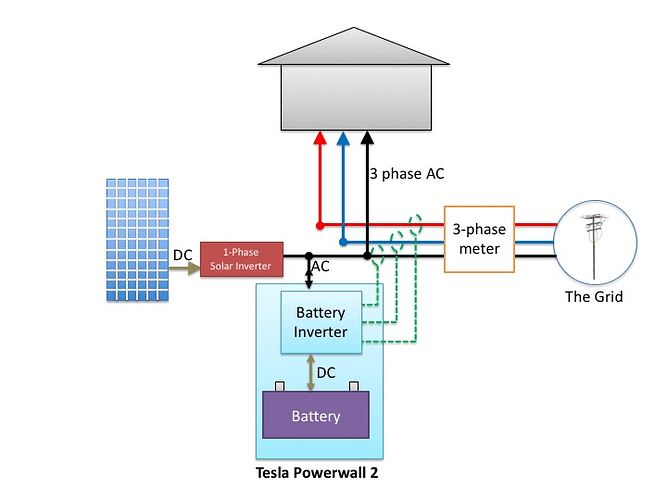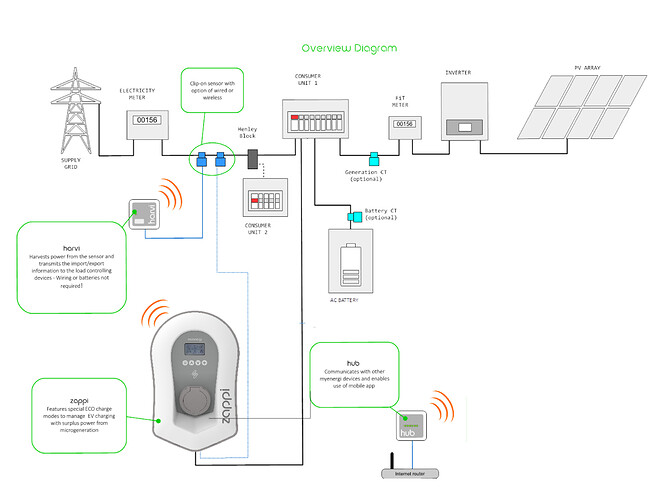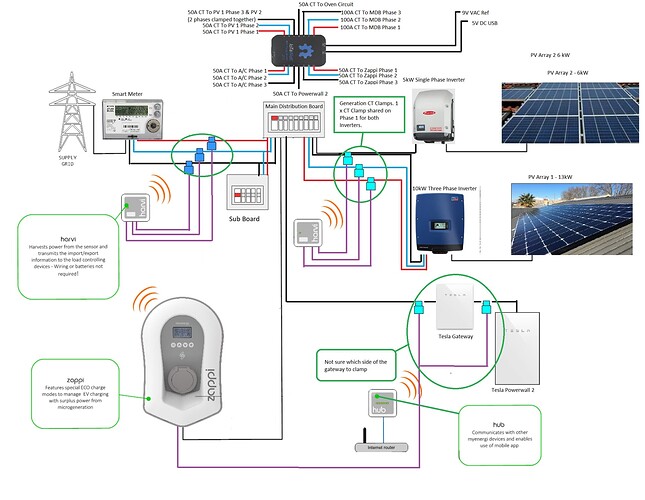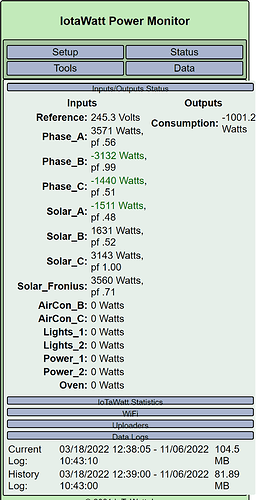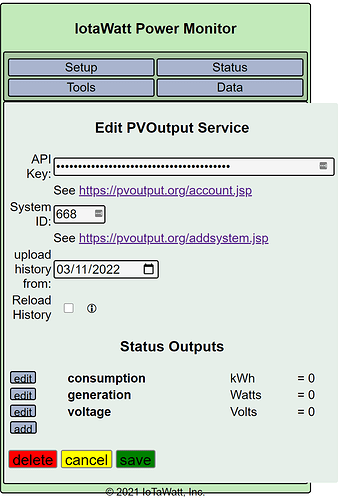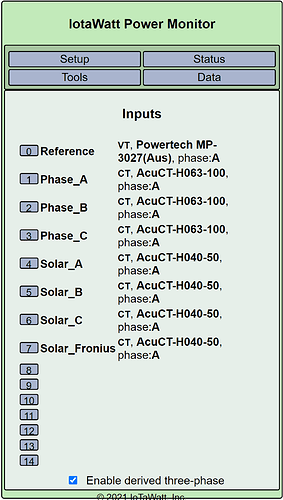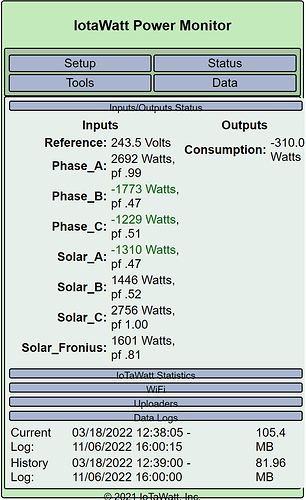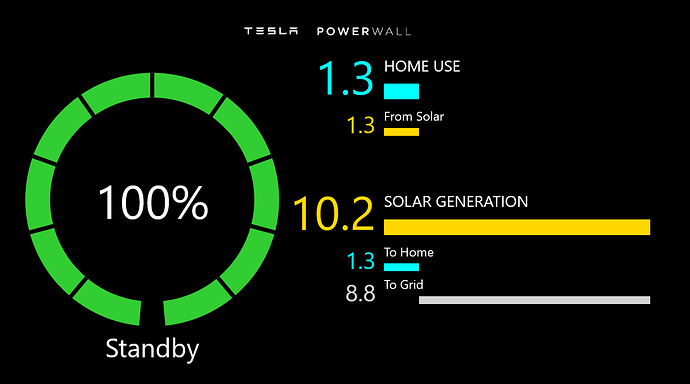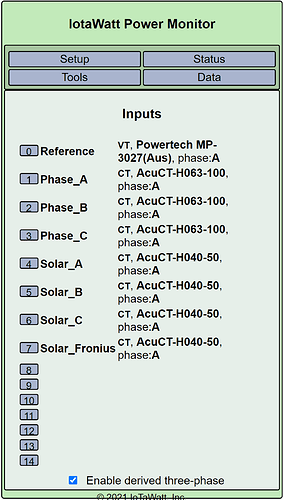Hi all
I’m currently building my forever home and decided on Iotawatt for my energy monitoring. I’ve used various monitoring platforms over the years including currentcost, smappee, efergy, SMA Home Manager etc but have never really been happy with any of the solutions from an accuracy perspective with the exception of the SMA Home Manager. The drawback with that is that I have been on PVOutput for about ten years and exporting the solar data required third party programs that often broke plus I either had to punch in my consumption data from my smart meter manually or use a seperate consumption monitoring platform such as Smappee. Looking for something better, I found Iotawatt and have just received my bundle this week. I ordered the Aussie bundle with 3 x 100a CT clamps and 11 x 50a CT clamps.
My current setup in my new home will be 3 phase power with an SMA Tripower Solar Inverter (3 phase) and 13kW of panels. I have 3 phase ducted aircon. HWS is a Sanden Heatpump.
I am considering adding a battery (Powerwall 2) and/or a second inverter and extra panels which would not be feeding back to the grid due to retailer limitations. My Distributor (Endeavour Energy) allows up to 10kW of PV generation per phase i.e. 30kW maximum. We may go down the EV route in the future, but that is not in the current plans.
Talking to my solar installer, they are recommending that if I add additional solar to use a single phase inverter. If I add a PW2, it is single phase but there is some way that it gets wired up to supply all three phases apparently. However, during a blackout, it will only supply one phase. If I add the PW2 and solar, it is set up as a virtual circuit. I haven’t received the detailed proposal as yet so I’m not sure of the exact way this would be set up.
So I’m after some advice about how best to connect the Iotawatt (and whether I need a second unit). My installation scenarios are:
-
Existing - 3 Phase power with 3 phase solar Inverter and 3 phase aircon.
-
Option 1 As above but add additional single phase solar inverter and panels - no battery
-
Option 2 Existing system and add Powerwall 2 with no additional solar
-
Option 3 Go the whole hog and add the extra solar and a battery
In terms of circuits, I’m not sure whether I need to include any controlled loads or not. I’ve never had them in my previous setup. At this stage, I am not planning on it.
I’ve got a bit of time as my house won’t be finished until May. However, the existing solar gets reinstalled in a couple of weeks and if I add the battery and/or extra solar I will do it then.
